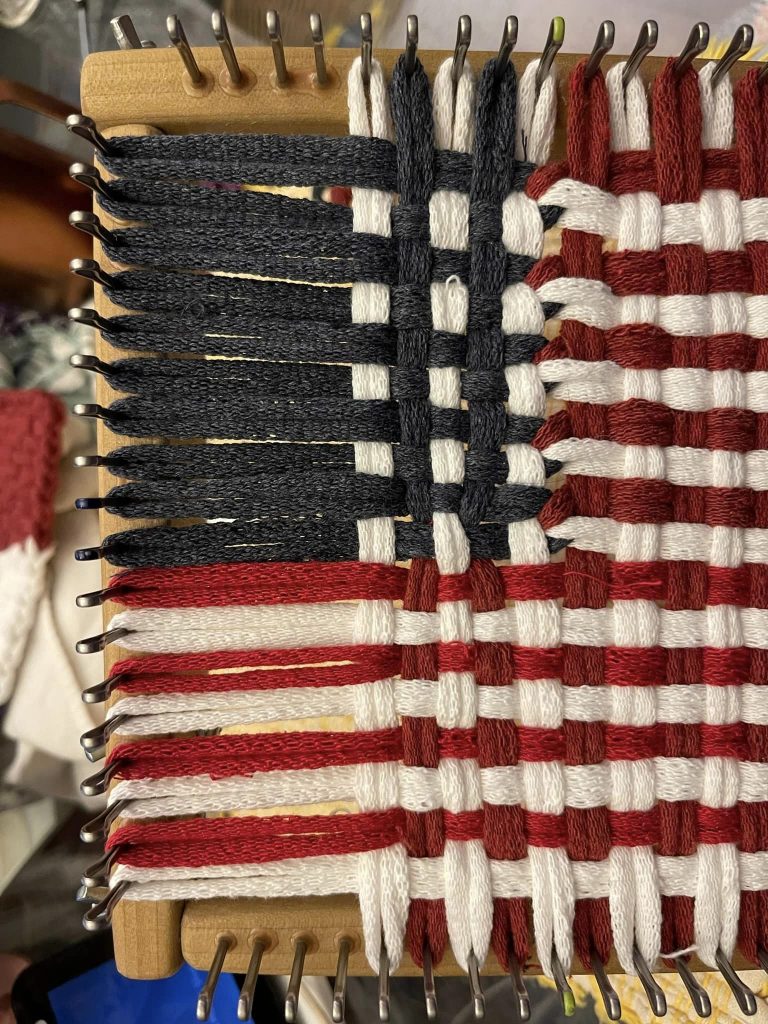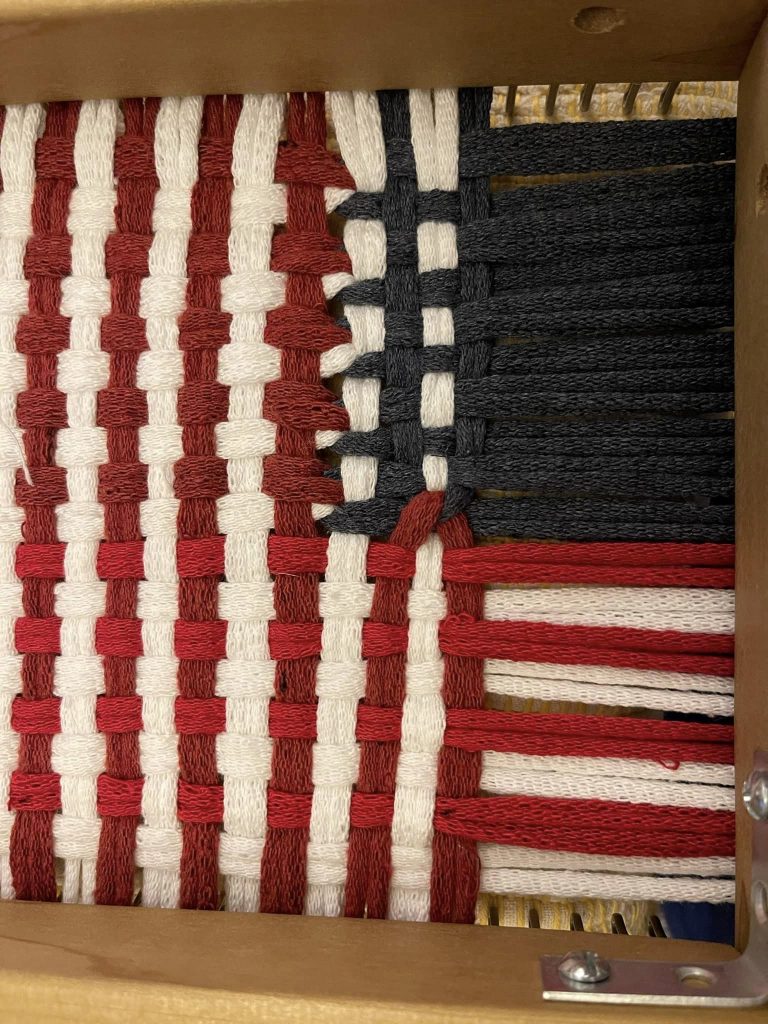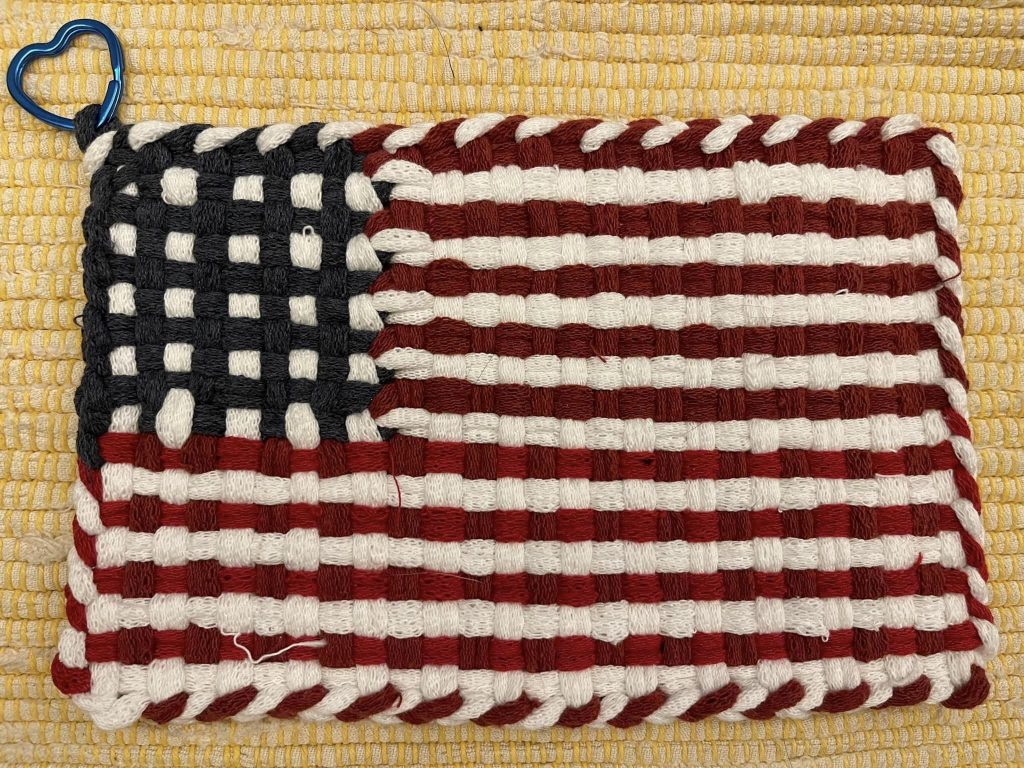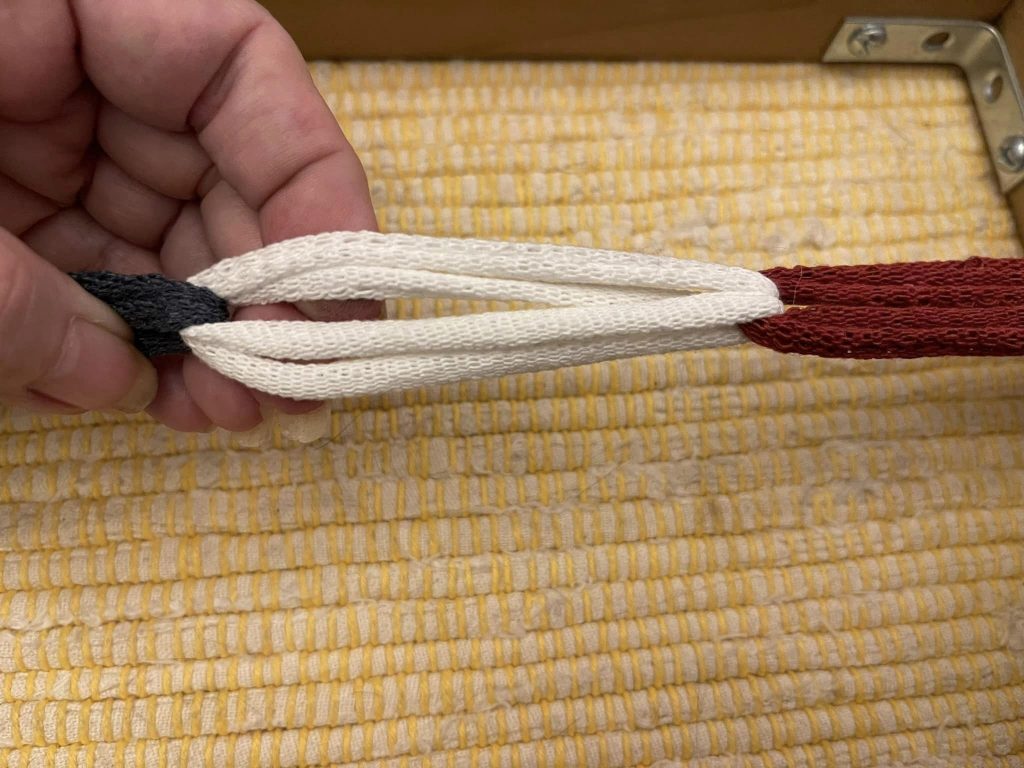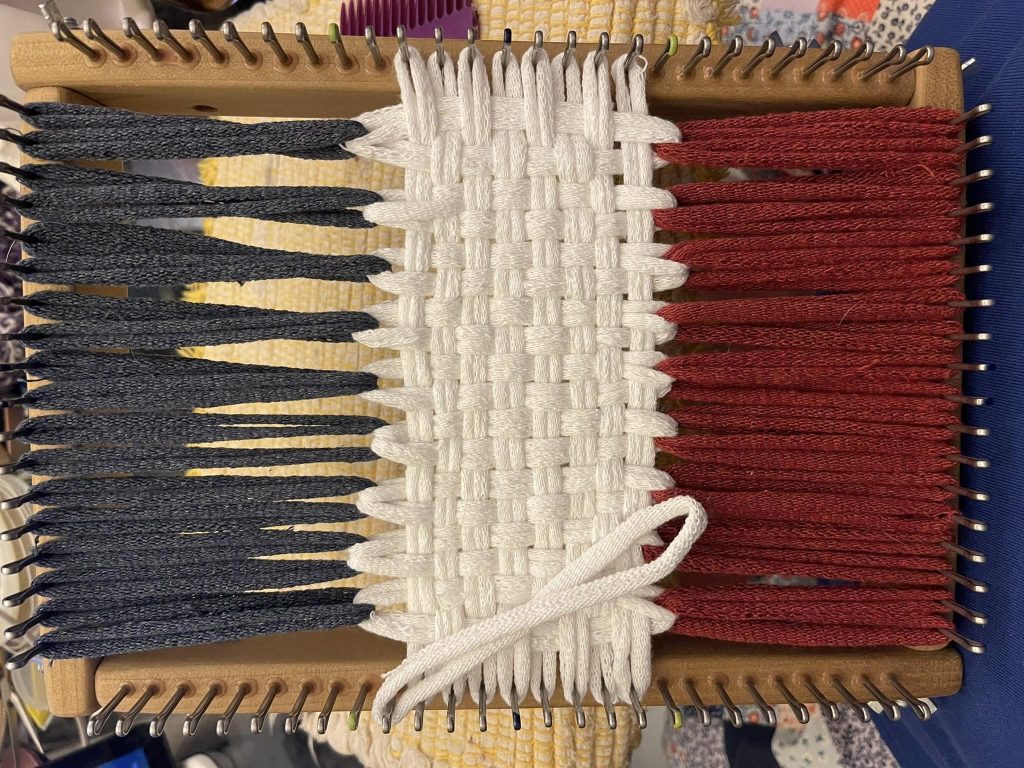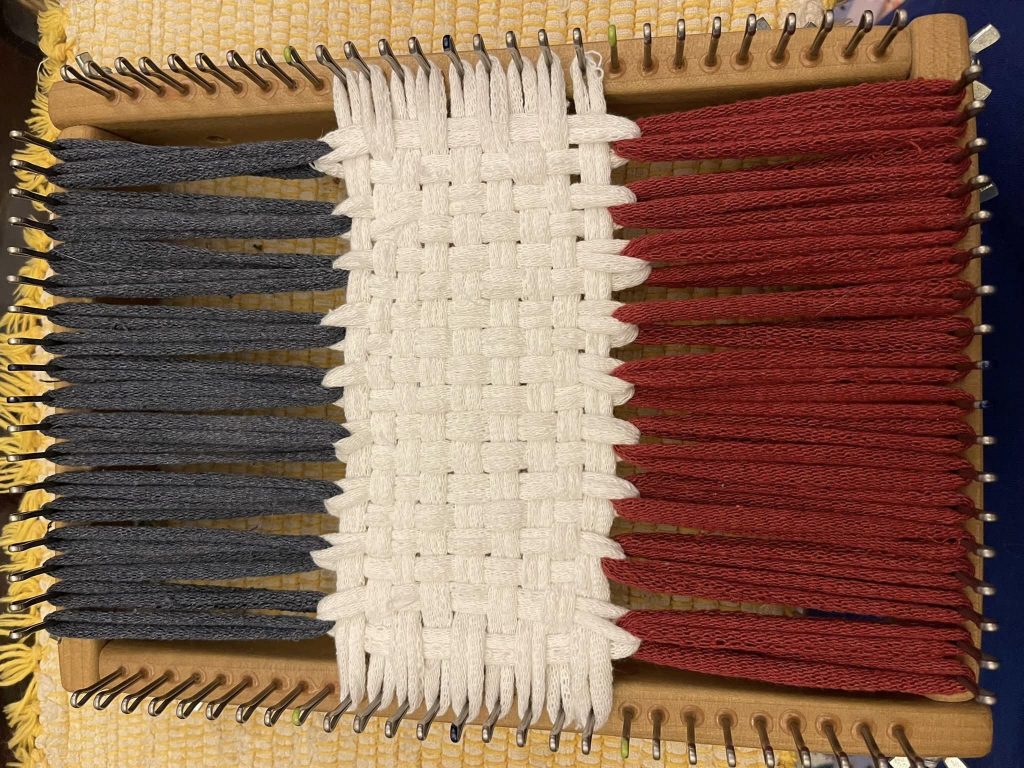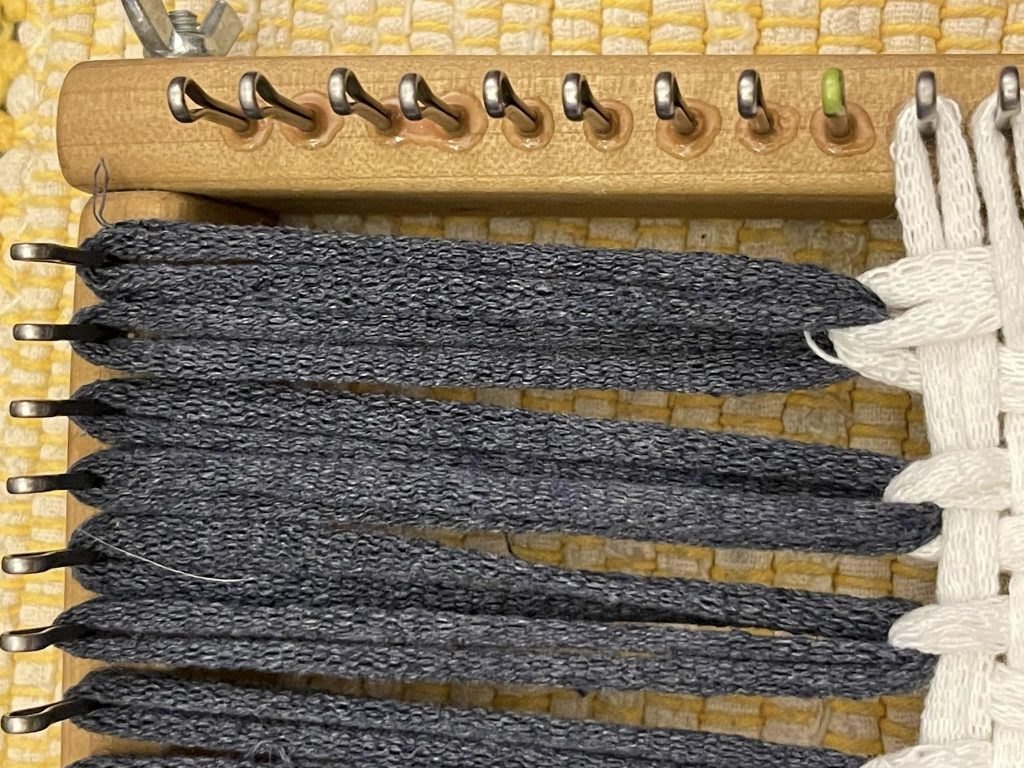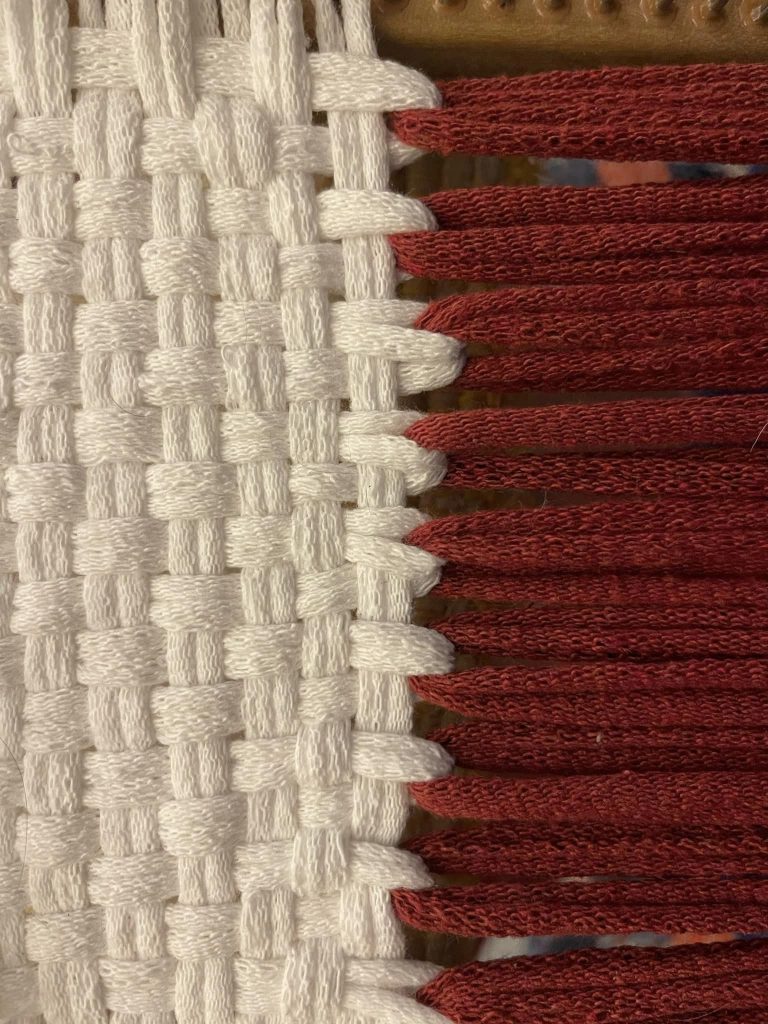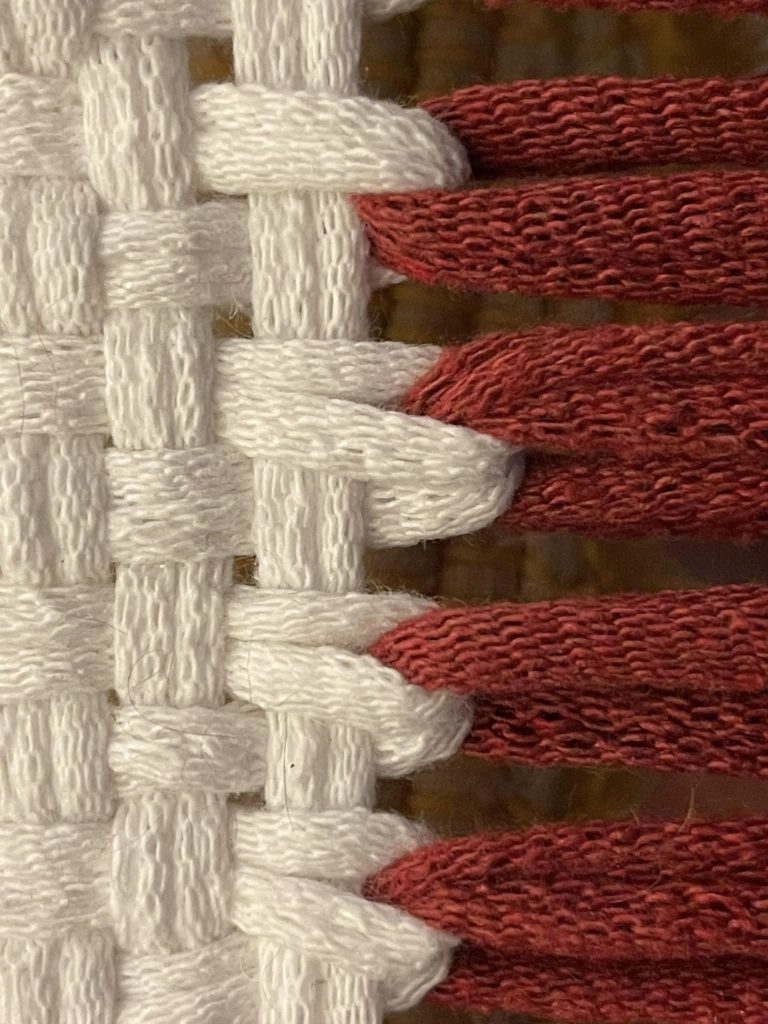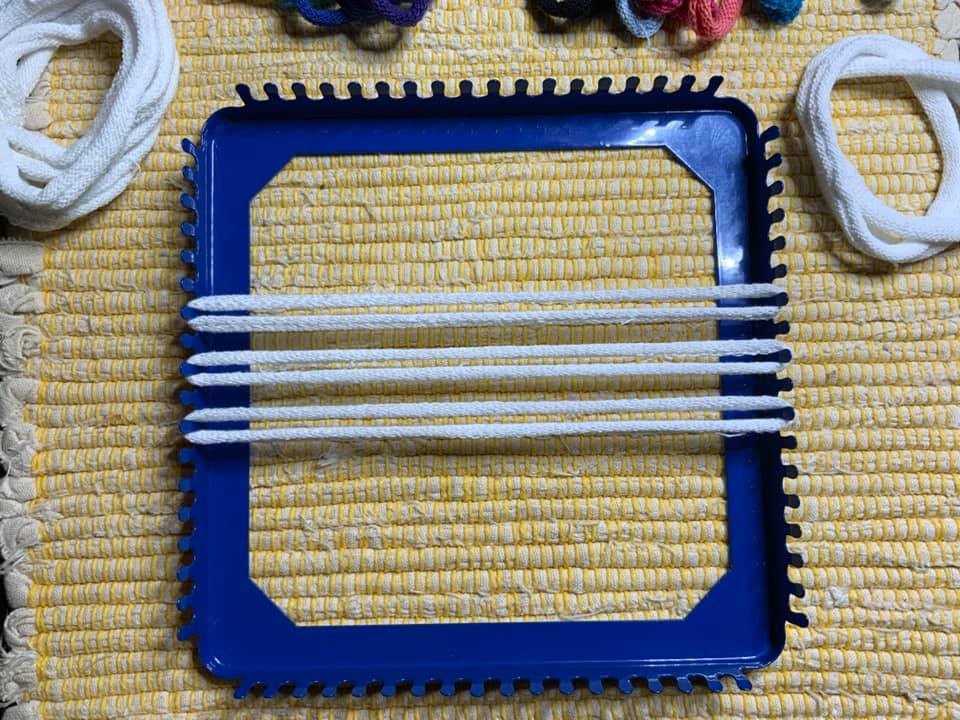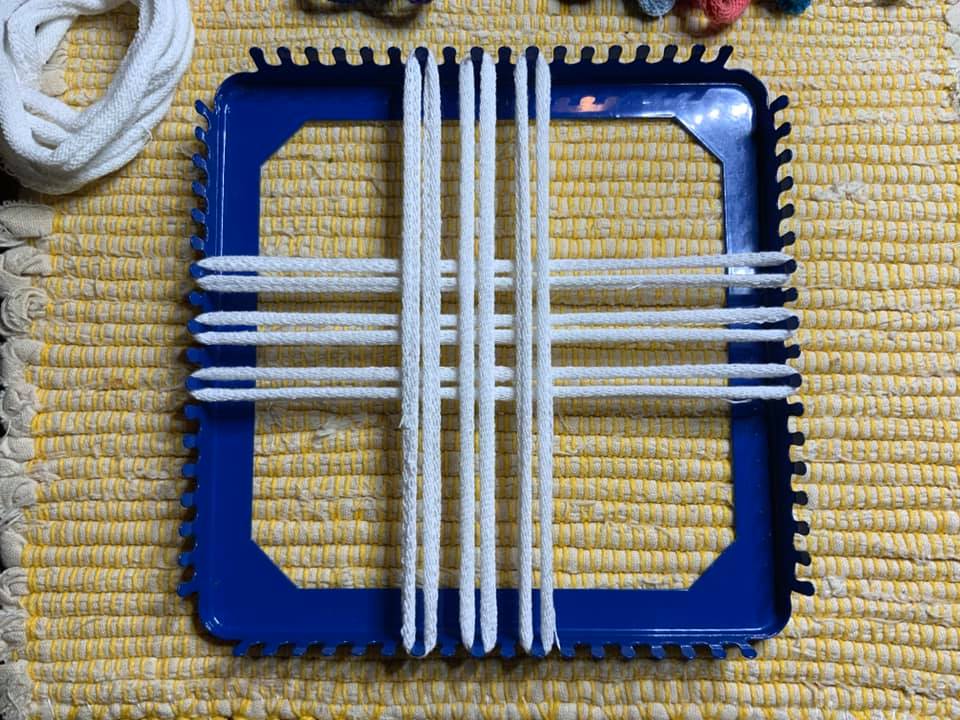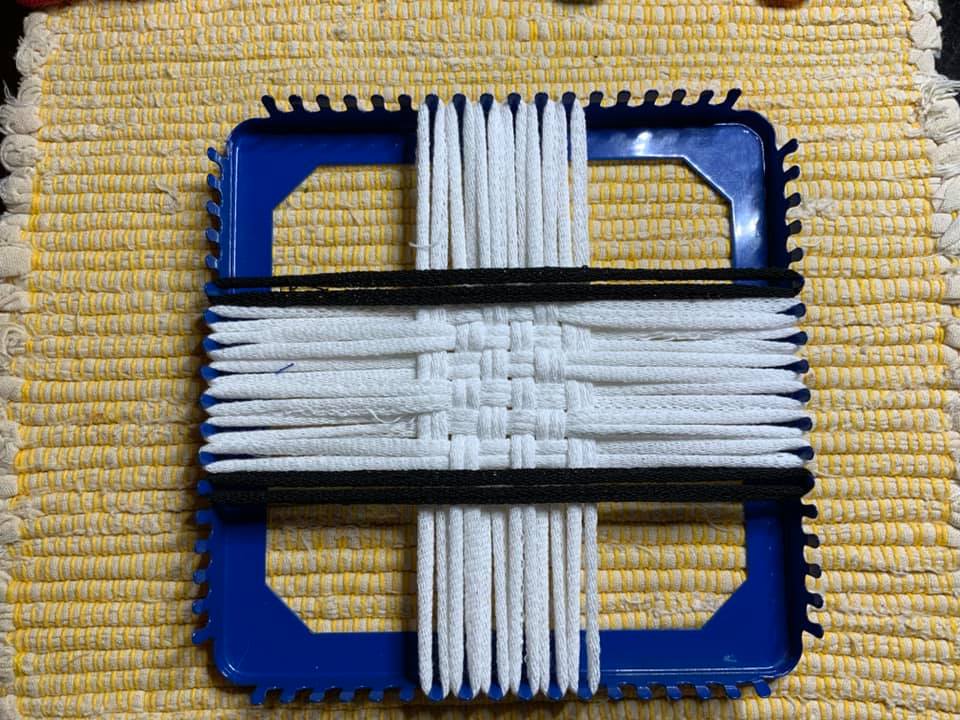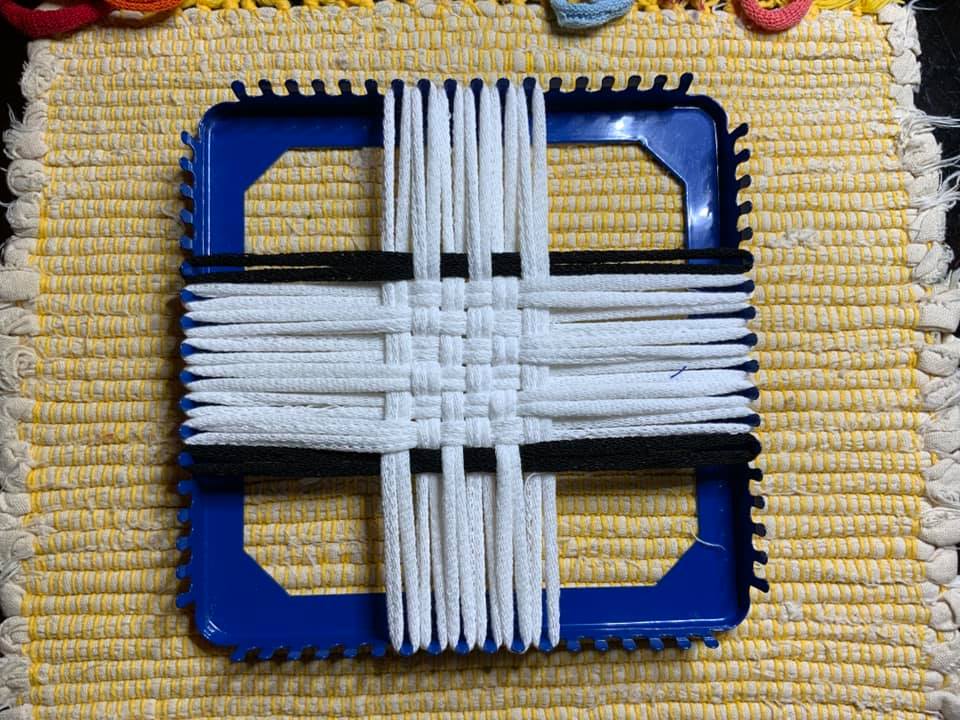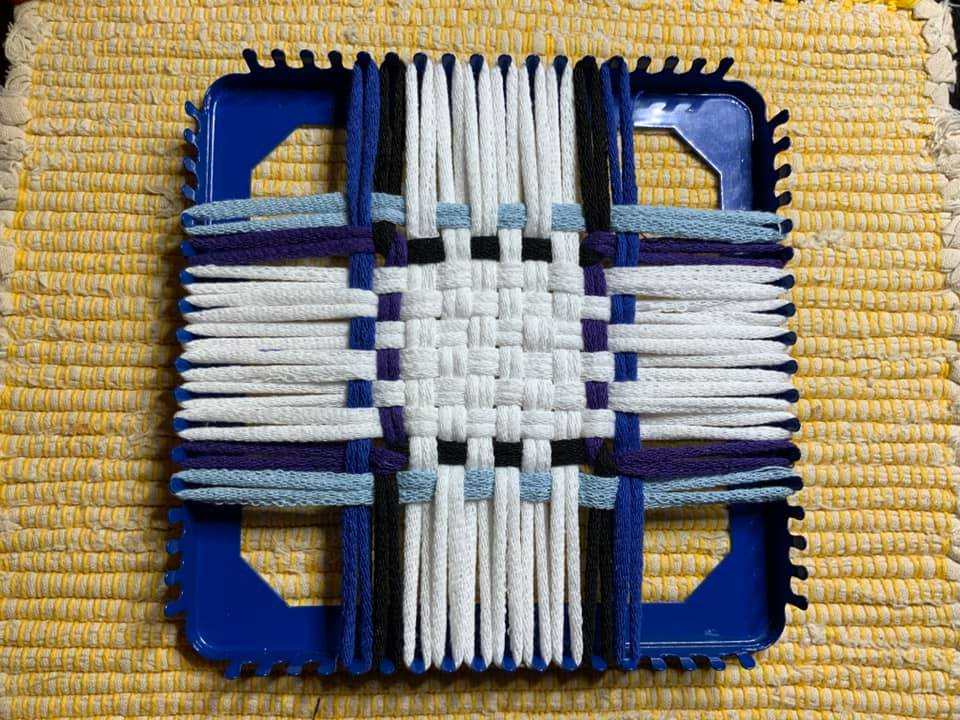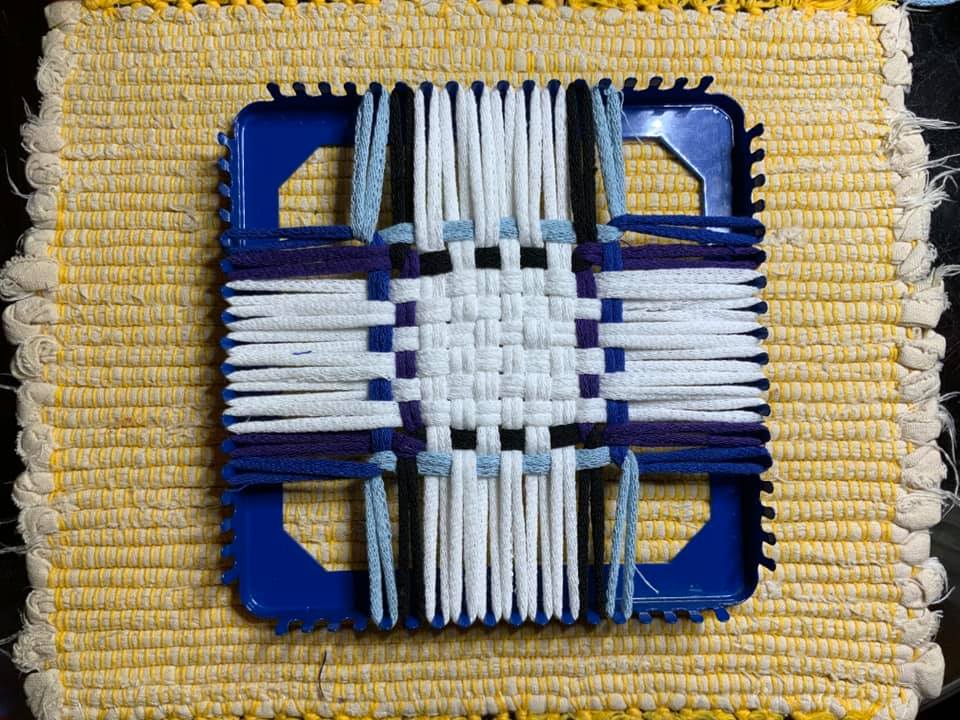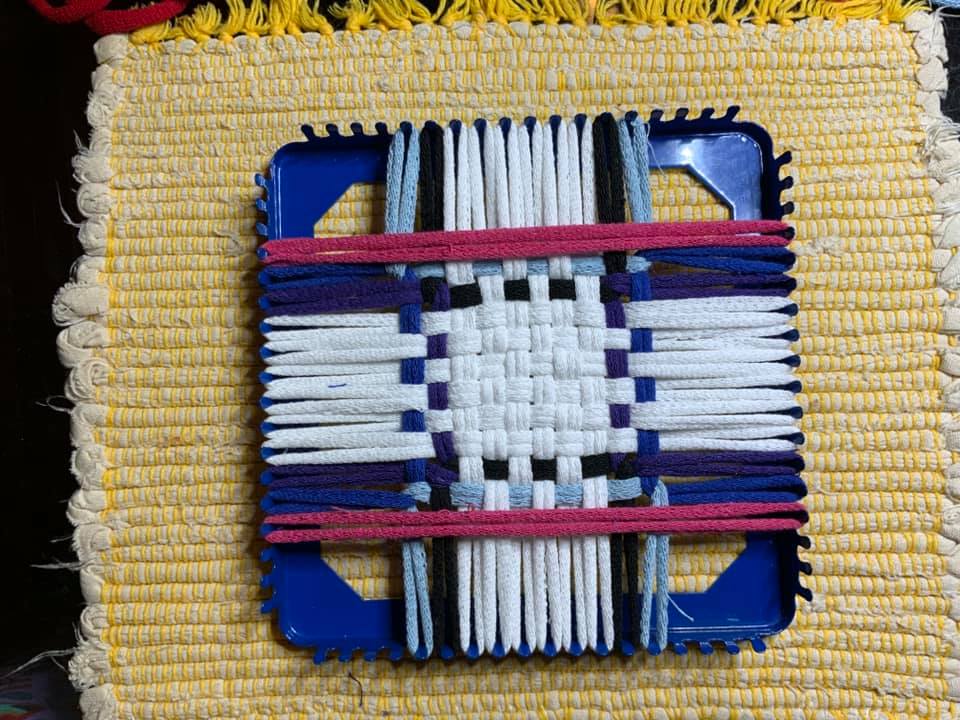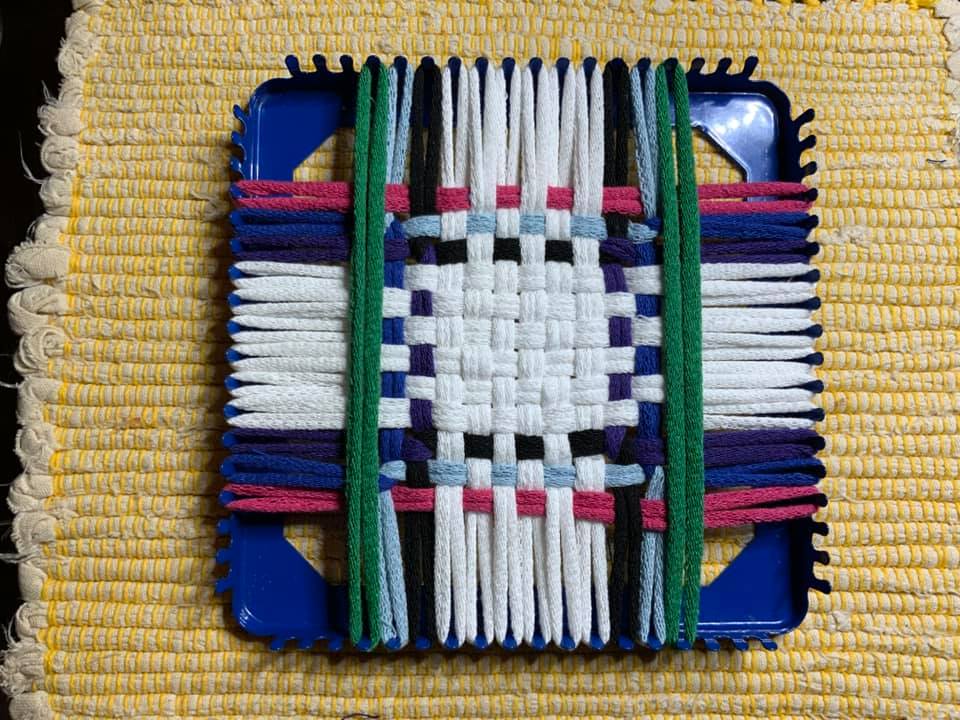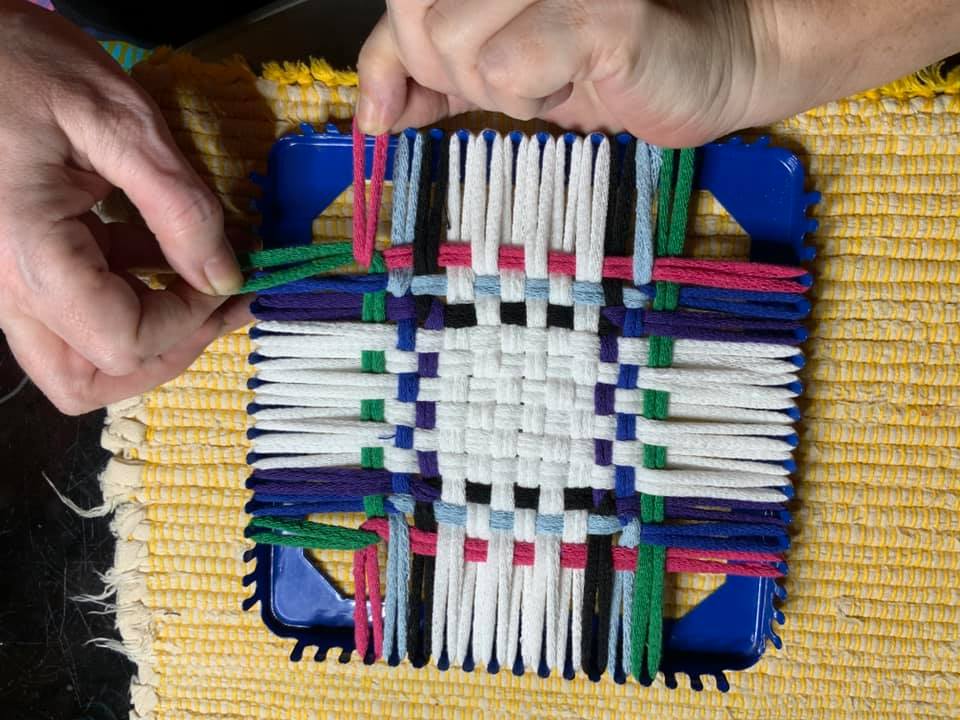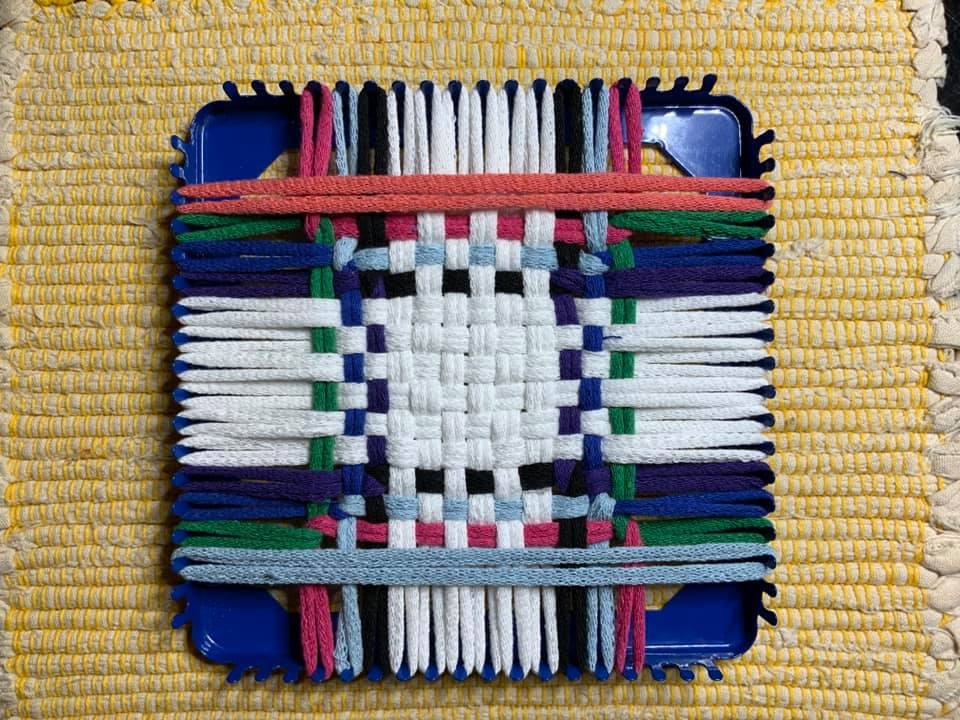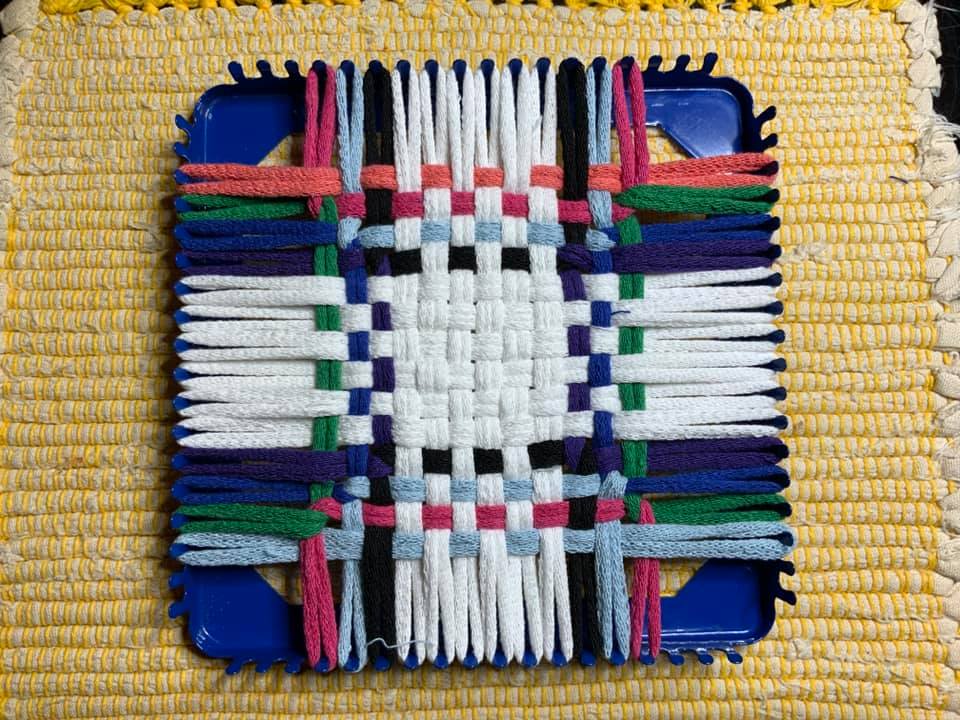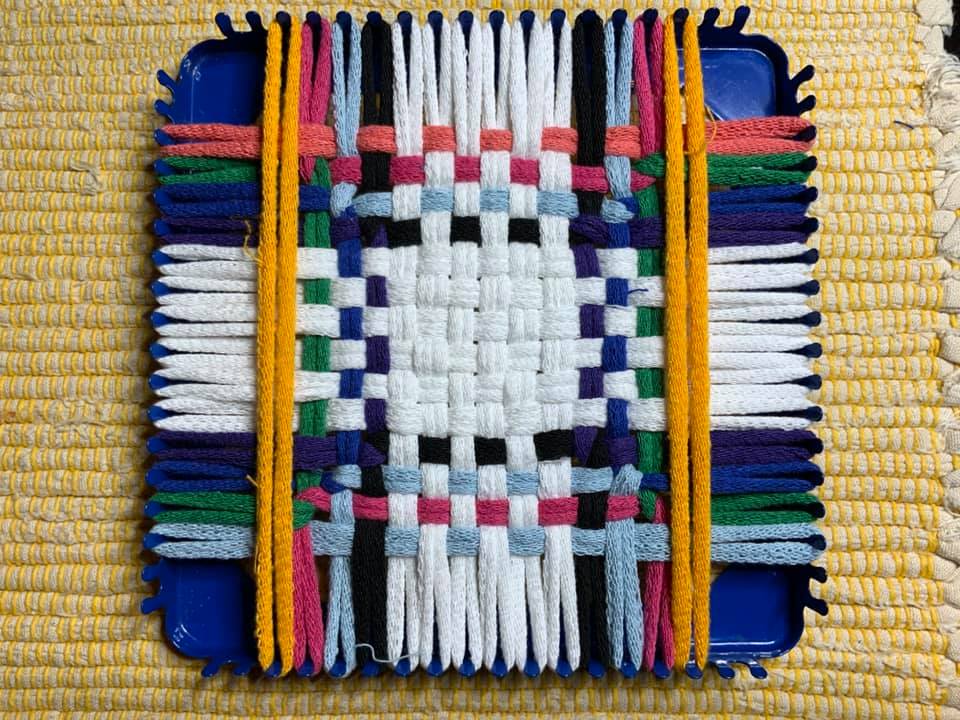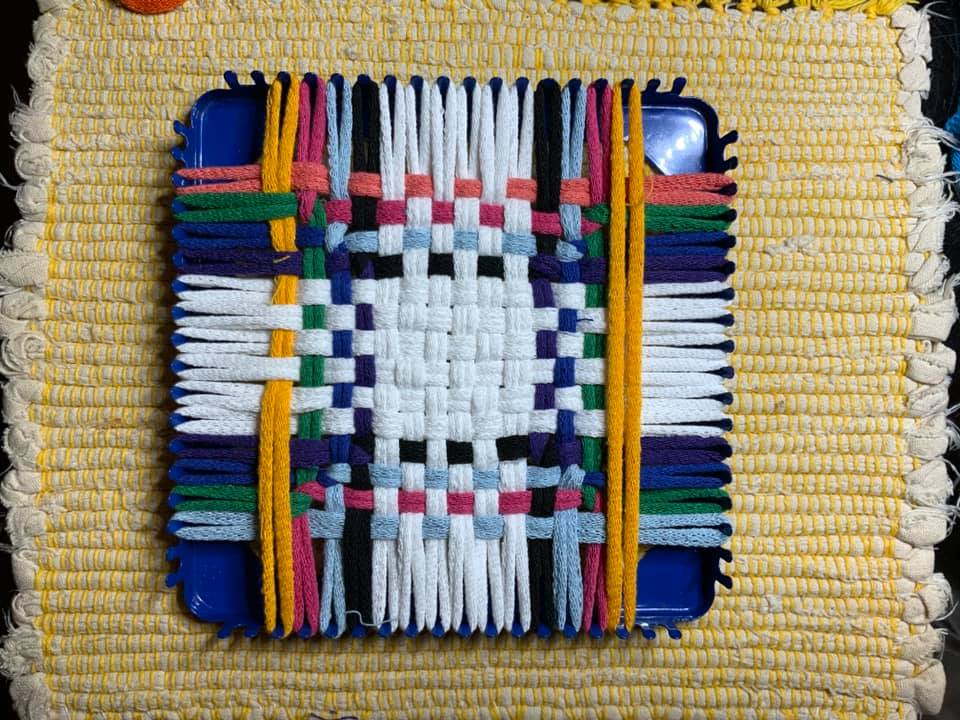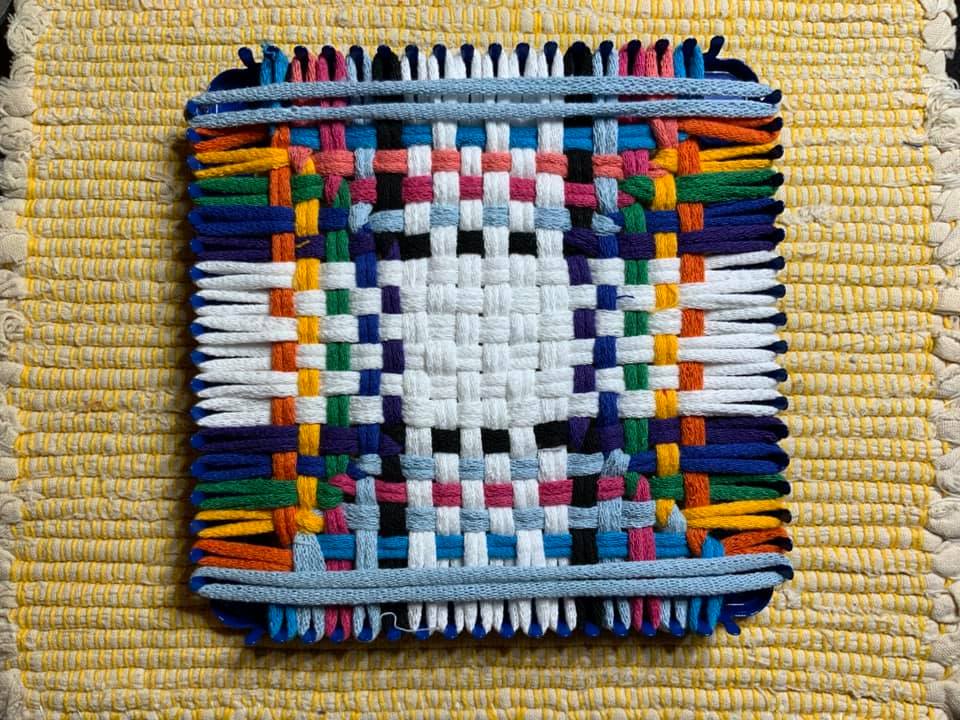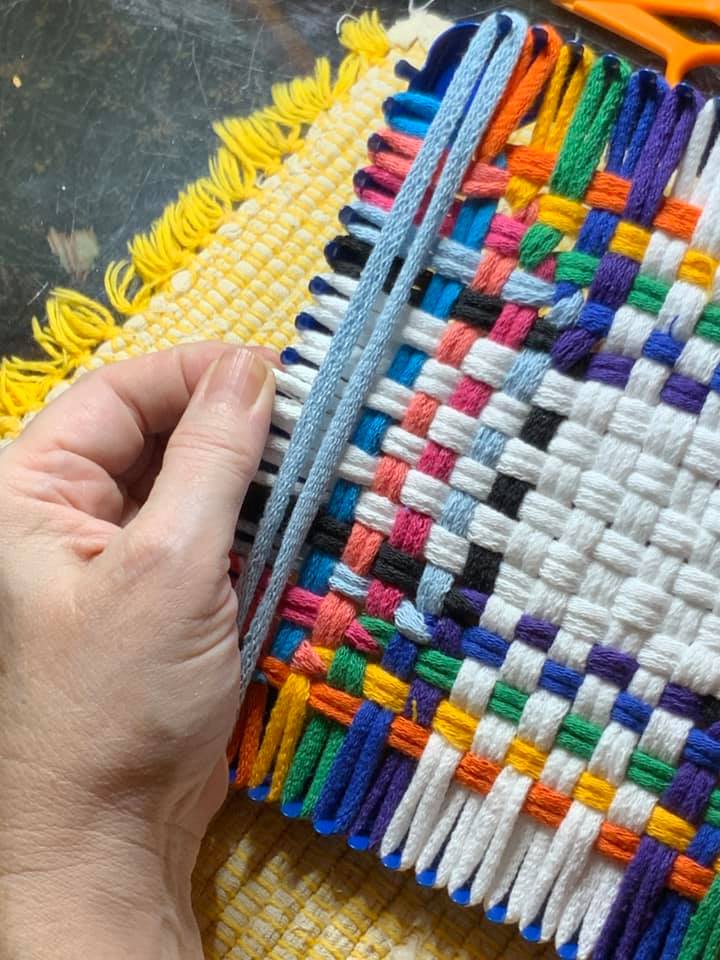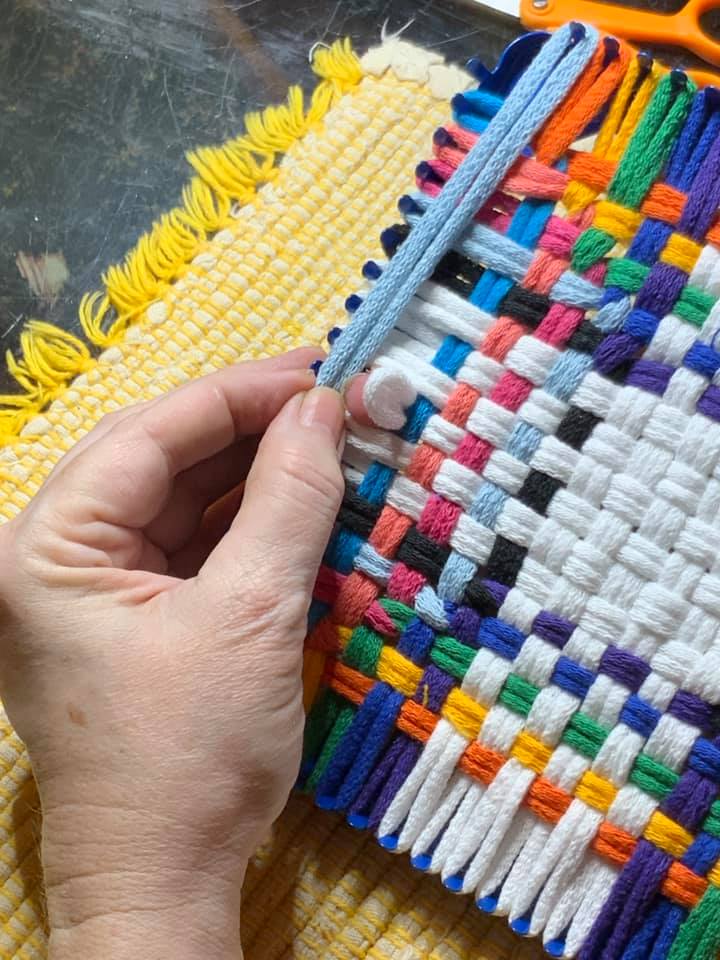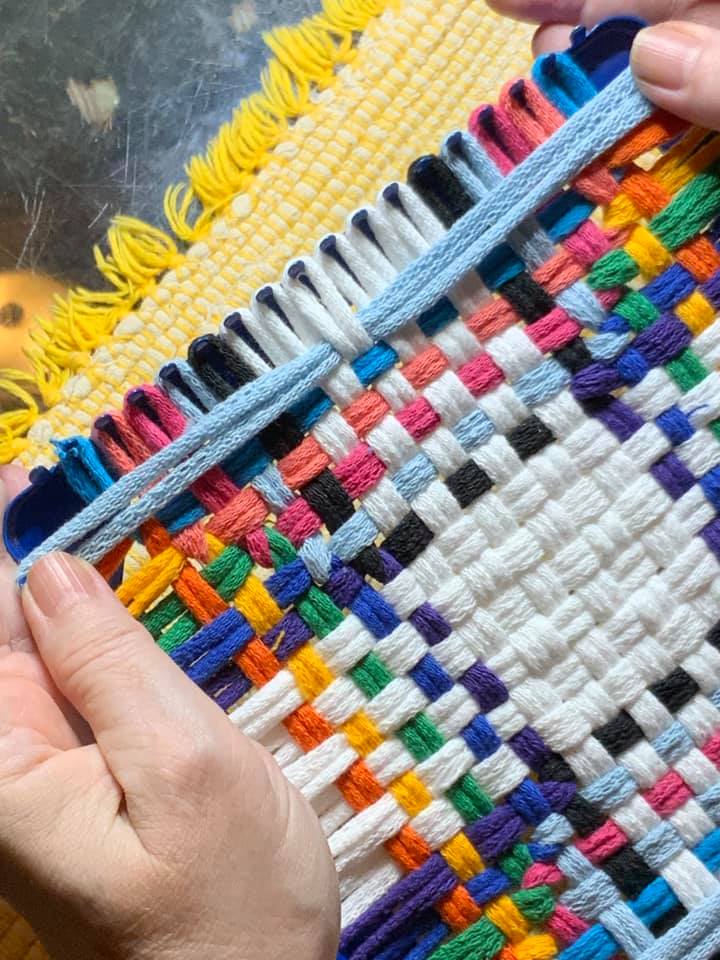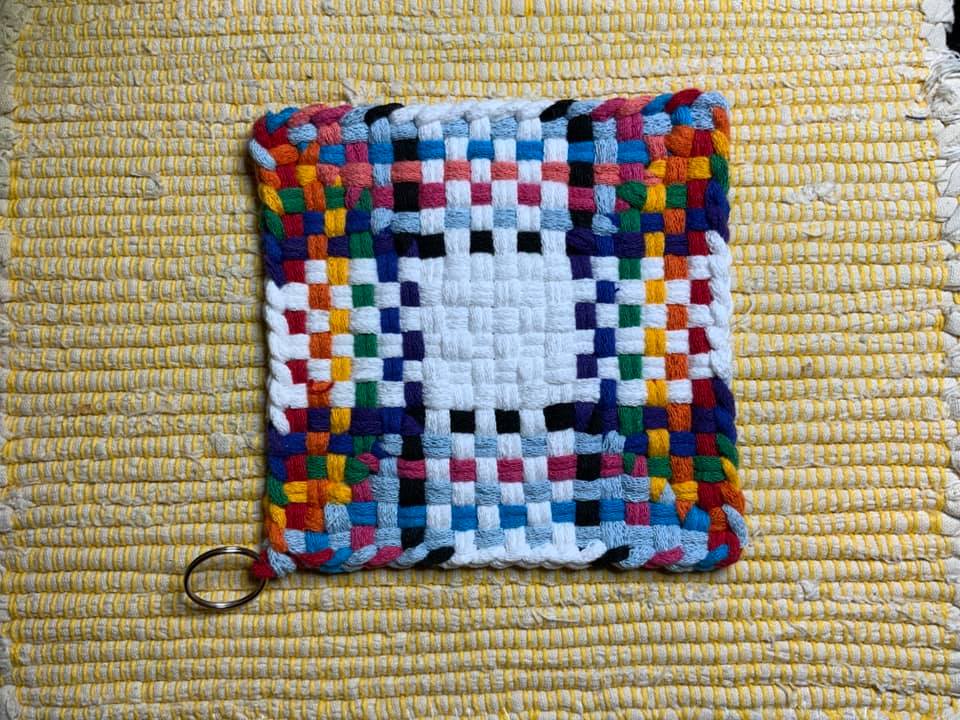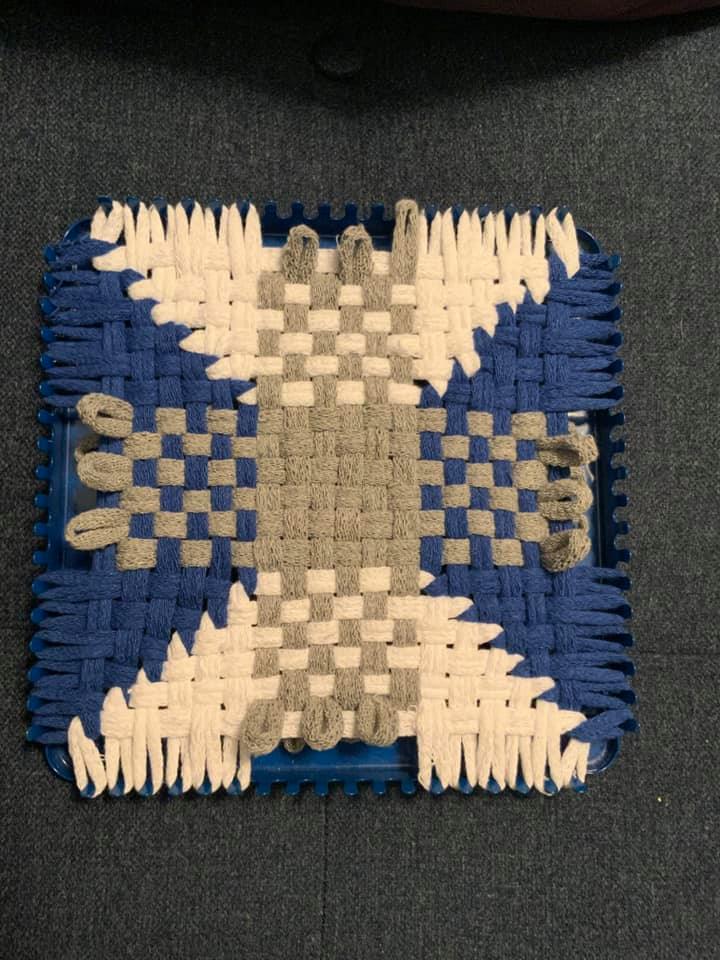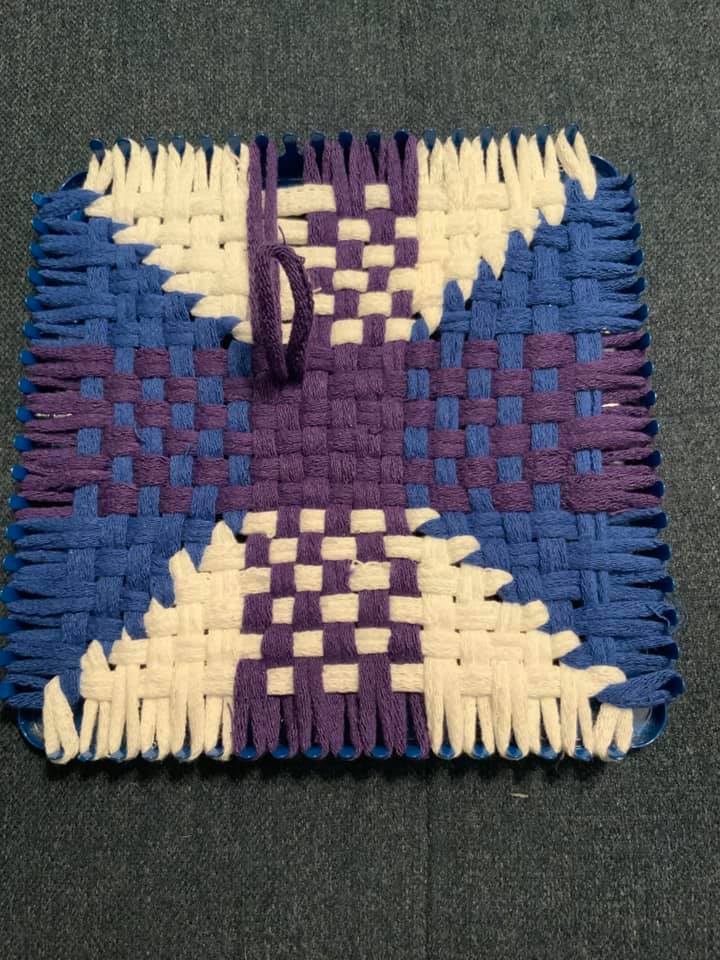When I bound off the French flag this morning, I stared at for long enough to realize… half of a traditional loop plus one full length traditional loop *also* equals one pro loop, which means, VOILA!!! US FLAG!
[Added by Matthew:] This example is woven on an oblong (18×27) loom, but you could use the same technique to make a square pro (27×28) potholder with more stripes.
Warp the lower eight pegs with alternating red and white pro loops. Warp the upper ten pegs with alternating red and white traditional loops, using a folded-over blue traditional loop threaded through the loose ends of each pair.
Weave the first eighteen rows with alternating red and white traditional loops woven in tabby plain weave to form stripes.
To weave the last ten rows, fold a red and blue traditional loop over each other and place them on the loom with one empty peg between them. Weave them into each side, with the blue loop weaving into the blue square and the red loop into the red and white stripes. Then place a white traditional on the empty pegs and weave it in, in between the split legs of the red and blue loops. Do the same with another white loop next to them, then repeat the process to the end of the loom.
Bind off as usual.



